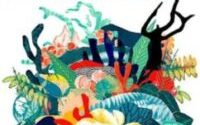Cultural and Creative Arts JSS 1 Curriculum Guides – Rudiments of Music – Musical Alphabets | Staves, Lines and Spaces | Relative Values of the Notes
CULTURAL AND CREATIVE ARTS
THEME – PERFORMING ARTS & ENTERTAINMENT
TOPIC – RUDIMENTS OF MUSIC
CLASS – JSS 1
LEARNING AREA – Introduction, Musical Alphabets, Staves, Lines and Spaces and Relative Values of the Notes
PERFORMANCE OBJECTIVES
By the end of the lesson, most of the students should have attained the following objectives –
1. identify the musical alphabets,
2. draw and name the staves, lines and spaces.
3. identify different types of staff/stave using clef signs.
4. recognize and name the notes in the modern usage.
5. identify the relative values of the notes.
6. define a scale.
INSTRUCTIONAL MATERIALS
The teacher will teach the lesson with the aid of music manuscripts, flash cards, pianos, decent recorders, modulators.
CONTENT OF THE LESSON
FOCUS LESSON
MUSICAL ALPHABETS
The musical alphabet includes only 7 letters: A, B, C, D, E, F, G. On the staff, each line or space represents a different letter. The treble clef is also known as the G clef because it indicates that the second line from the bottom will be G.
CLEF AND NAMES OF THE STAVES
TYPES OF STAFF
A staff is a set of lines and spaces which indicate the pitch of written notes. Additional lines above or below the staff is known as LEDGER LINES.
It is made up of five lines and four spaces.
The lines and spaces have letter names as shown below –
1. Treble
2. Bass
3. Great stave
MUSICAL NOTES AND THEIR RELATIVE VALUE
Music notes are symbols that indicating the length of music notations. The duration of the sound depends on the note’s length (or values), which is specified by its shape, stem, or flag(s); and to every music note, there is an equivalent rest sign.
NAMES OF MUSIC NOTES
Whole Note (Semibreve)
Half Note (Minim)
Quarter Note (Crotchet)
Eighth Note (Quaver)

Sixteenth note (Semiquaver)
Thirty Second Note (Demisemiquaver)
MAJOR SCALE OF C NATURAL
C major (or the key of C) is a major scale based on C, consisting of the pitches C, D, E, F, G, A, and B. C major is one of the most common key signatures used in music.
LESSON PRESENTATION
TEACHER’S ACTIVITIES – The teacher,
1. guides students to recognize the types of staff/stave.
2. guides the students to draw line and spaces, bass, treble and the great stave.
3. explains the relationship in value between one note and the next.
4. constructs a series of notes from C in alphabetical order up to its eighth degree (octave).
5. assists the students to identify the notes on a key board instrument.
6. summarizes the lesson on the board.
STUDENT’S ACTIVITIES – The students,
1. name the musical alphabets and types of stave.
2. draw the different lines and name the lines and spaces.
3. identify each musical note by describing the shape and reproducing the notes and their values.
4. sing the scale produced using solfa names.
5. sing a melody using a solfa notation.
LESSON EVALUATION
Teacher asks students to,
1. name the seven musical alphabets.
2. draw the great stave.
3. give the letter names of the treble stave.
4. list the six musical notes in the descending order of their valves.
5. draw the diatonic scale of a major key (c or G).







